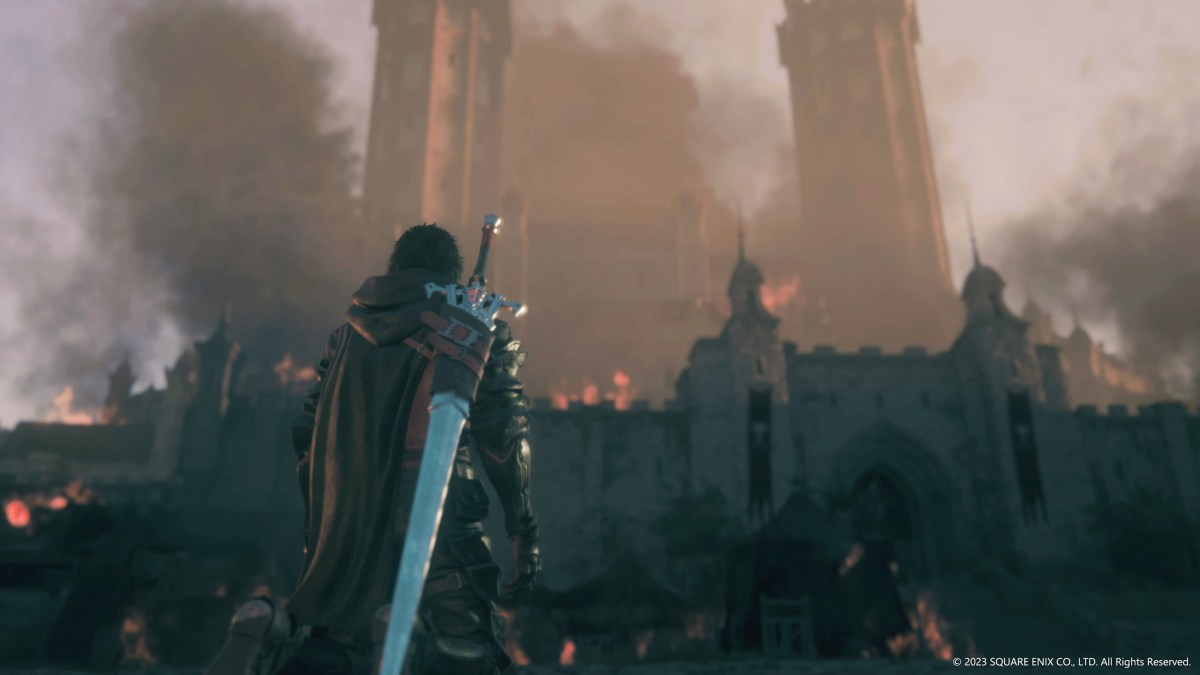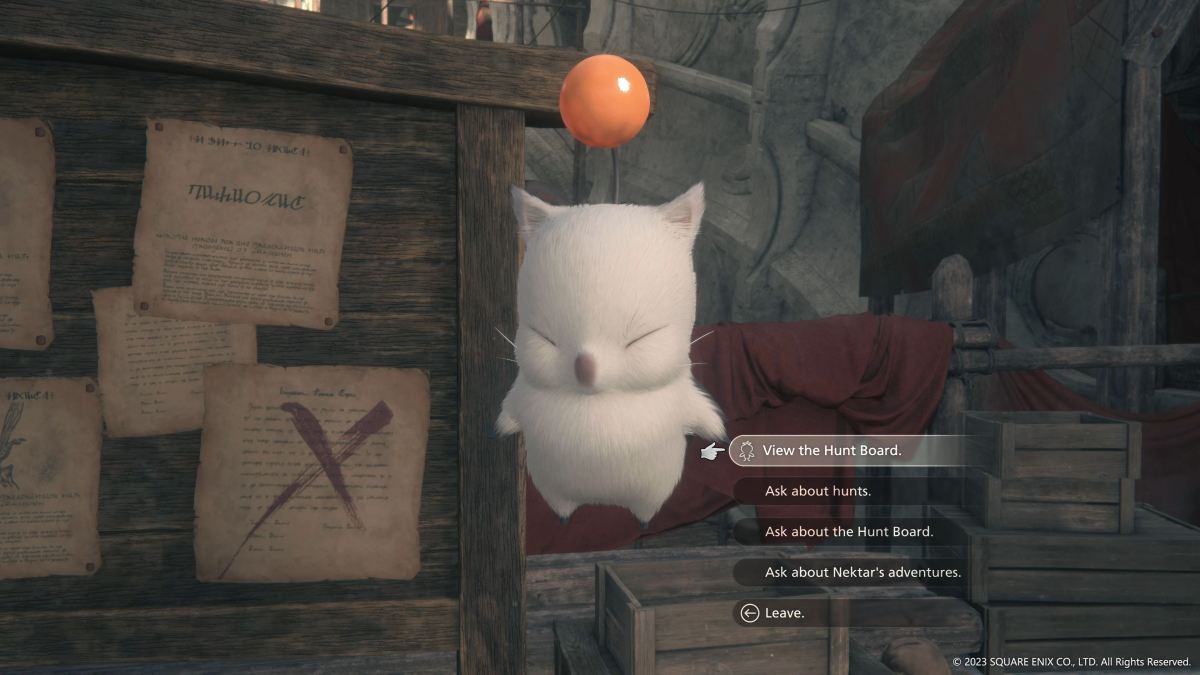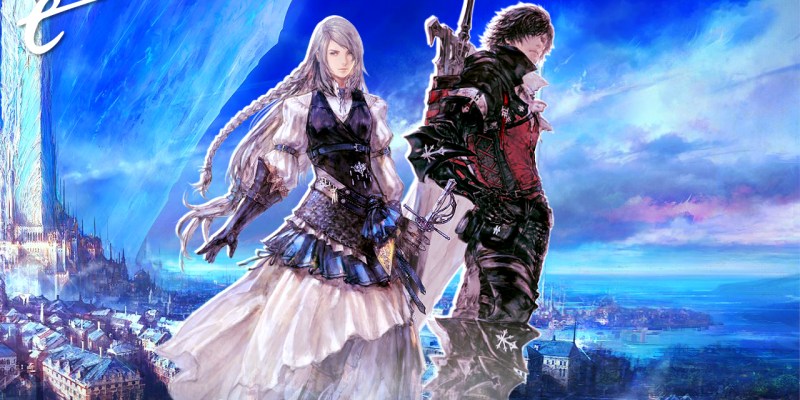15 hours into Final Fantasy XVI, I’m constantly amazed at just how much I care about the characters, their motivations, and the political maelstrom that presides over the entirety of Valisthea. Yes, it’s clear that Square Enix crafted a story that was inspired in equal parts by everything from Game of Thrones, Attack on Titan, and even Neon Genesis Evangelion, but the excellent writing, emotional performances, and beautifully staged cinematics have me engrossed in the narrative in a way I haven’t felt since the original PlayStation. And while there’s an overarching sense of “look, but don’t touch” to much of the world, the gorgeous presentation and energetic combat of FF16 has kept me awake and playing long into the night.
I recently raved about how good of a job the opening two-hour demo did at selling me on FF16′s story, visuals, and combat, and I’m happy to say that those feelings of excitement haven’t wavered in the dozen hours I’ve played past that point. Clive’s journey for revenge and redemption has already made him one of my absolute favorite Final Fantasy protagonists ever, and that’s in no small way thanks to the amazing performance from Ben Starr, as well as the entire ensemble cast. Particularly great is Ralph Ineson’s Cid, who’s rugged blend of Robin Hood and Han Solo steals every single scene that he’s in.
Like the aforementioned inspirations, heroes and villains alike are painted in complex shades of gray, and every twist and turn that’s dropped along the main story has me eager to press on and see what might happen next. And though the absolute barrage of proper nouns never lets up, FF16’s Active Time Lore system allows you to pause the action at any given time for a quick refresher on the important characters, places, and topics of any given scene. It might sound simple, but it’s genuinely one of my favorite new mechanics of 2023, and something that I hope a lot of developers take inspiration from.

You’ll encounter a lot of those proper nouns while traversing the world, which is done by selecting your destination on an evolving map. It’s not open world in the traditional sense, but areas are large and interconnected enough to really give off a sense of scale, with some particularly memorable vistas to gawk at along the way. Along with this, fast travel between areas really highlights the speed and power of the PS5. Going from one side of the world to another in just a handful of seconds makes FF16 “feel” new gen in a way recent cross-gen games haven’t.
The expediency of fast travel is a blessing, since I found myself ping-ponging between my rebel group’s base of The Hideaway, and across the map completing all manner of side quests and big game hunts. While some of these optional missions felt bog standard, others really stood out as small stories that helped flesh out the rest of the world, like a village filled with people whose distaste for magic users like myself led to some shocking revelations. I also loved the sense of altruism at play here, with Clive genuinely wanting to help people out in order to slowly create a better world. The Hideaway constantly reminds us who and what we’re fighting for.
My own personal pace of side quests and main story missions helped create a nice ebb and flow to FF16 where I was never bored with whatever I was currently engaged in. That said, it’s a bit of a inconvenience that there’s no option to toss a minimap on your HUD, meaning that in certain side quests where I had to travel to a specific corner of a specific area, I had to repeatedly open up the main map to make sure I was heading in the right direction.
Similarly, The Hideaway only has one point of fast travel at its entrance, despite the base evolving and growing over time. Whenever I wanted to visit the garden to grab a new side quest, that meant trekking through the entirety of the place on foot, which got a bit old after the 10th time. A handful of extra fast travel points, or even more intricate looping pathways could have dodged this minor annoyance.

Thankfully, the world never stops being gorgeous. But for as gorgeous as it may be, there’s that aforementioned sense of “look, but don’t touch” that oftentimes makes it feel like I’m walking through a museum. A beautiful, fantastic museum, but a place where I’m discouraged from interacting with the exhibits behind a velvet rope nonetheless. Of course, the series has never been known for its environmental interactivity, but coming so close off the heels of Tears of the Kingdom, I noticed a lack of playfulness and dynamism to the world of FF16. That said, there’s plenty of kinetic energy when it comes to the game’s combat.
While the action-focused nature of the combat has been a point of contention for fans lamenting the loss of the series’ turn-based roots, I quickly fell for the rhythm and vibrant nature of every encounter, especially once you start unlocking different Eikon stances to swap between on the fly. Surveying the enemy types, managing ability cooldowns, and giving commands to your dog Torgal (who’s a frontrunner for best pup of 2023) all blend together for some extremely satisfying battles, especially against the amazing bosses who weave in some of my favorite QTEs this side of Asura’s Wrath – seriously, I fully expect the 2012 gem to get a critical reappraisal in the shadow of FF16.
If I had one knock against the combat so far, it’s that the enemy variety feels a bit lacking, and my brain occasionally tends to go into autopilot after fighting the same swarm of spiders, lobsters, and soldiers in a given area a few dozen times in the span of an hour. Thankfully each major step in the plot took me somewhere new, and with that generally came a new batch of critters to slay.

Leading up to the launch of FF16, I’ve seen some folks online bemoan how the series has lost its way, and how this game doesn’t even feel like a Final Fantasy game. I completely disagree with that, and there were countless moments throughout the opening hours that resonated at a similar frequency of my favorite entries from back on the SNES, through the PS1, and onto the PS2.
It’s not just in familiar enemies like Bombs and Flan, beloved creatures like Chocobos and Moogles, and the aforementioned cigar-chomping Cid. But the themes of found family, dealing with the sins of the past, and the world’s relationship with magic as a metaphor for climate change all echoed back to my favorite entries in the series. And that’s without mentioning Masayoshi Soken’s phenomenal score, which I can already hold in similar high regard as my favorites from Nobuo Uematsu, Yoko Shimomura, and Hitoshi Sakimoto.
Final Fantasy XVI’s opening 15 hours has already caused me some sleepless nights, but I paid that price gladly thanks to the internal momentum of the story ushering me forward to the next quiet character moment, or startling story revelation. As a lifelong fan of the Final Fantasy series, my favorites are V, VI, VII, IX, XII, and Tactics (if that counts). Looking at that list, it’s clear that Final Fantasy has always been a franchise in a state of evolution, and that’s part of the reason why I’ve loved it since I was a kid. And I’m happy to say that at first impression, FF16 looks to be a fascinating addition to the iconic series.
